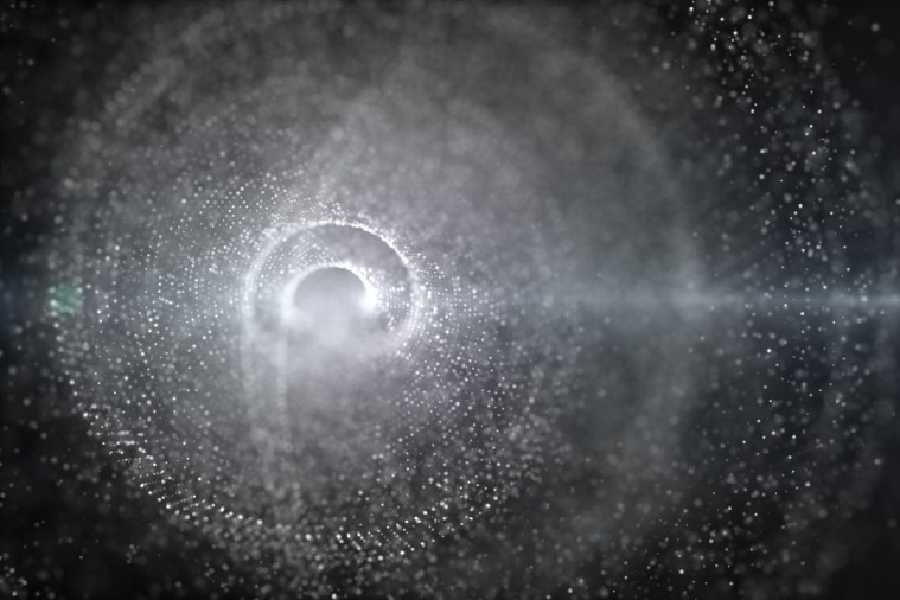On Thursday, astronomers who are conducting what they describe as the biggest and most precise survey yet of the history of the universe announced that they might have discovered a major flaw in their understanding of dark energy, the mysterious force that is speeding up the expansion of the cosmos.
Dark energy was assumed to be a constant force in the universe, both currently and throughout cosmic history. But the new data suggest that it may be more changeable, growing stronger or weaker over time, reversing or even fading away.
“As Biden would say, it’s a BFD,” said Adam Riess, an astronomer at Johns Hopkins University and the Space Telescope Science Institute in Baltimore. He shared the 2011 Nobel Prize in physics with two other astronomers for the discovery of dark energy, but was not involved in this new study. “It may be the first real clue we have gotten about the nature of dark energy in 25 years,” he said.
That conclusion, if confirmed, could liberate astronomers — and the rest of us — from a long-standing, grim prediction about the ultimate fate of the universe. If the work of dark energy were constant over time, it would eventually push all the stars and galaxies so far apart that even atoms would be torn asunder, sapping the universe of all life, light, energy and thought, and condemning it to an everlasting case of the cosmic blahs. Instead, it seems, dark energy is capable of changing course and pointing the cosmos toward a richer future.
The key words are “might” and “could.” The new finding has about a 1-in-400 chance of being a statistical fluke, a degree of uncertainty called three sigma, which is far short of the gold standard for a discovery, called five sigma: 1 chance in 1.7 million. In the history of physics, even five-sigma events have evaporated when more data or better interpretations of the data emerged.
This news comes in the first progress report, published as a series of papers, by a large international collaboration called the Dark Energy Spectroscopic Instrument, or DESI. The group has just begun a five-year effort to create a 3D map of the positions and velocities of 40 million galaxies across 11 billion years of cosmic time. Its initial map, based on the first year of observations, includes just 6 million galaxies. The results were released Thursday at a meeting of the American Physical Society in Sacramento, California, and at the Rencontres de Moriond conference in Italy.
“So far we’re seeing basic agreement with our best model of the universe, but we’re also seeing some potentially interesting differences that could indicate that dark energy is evolving with time,” Michael Levi, the director of DESI, said in a statement issued by the Lawrence Berkeley National Laboratory, which manages the project.
The DESI team had not expected to hit pay dirt so soon, Nathalie Palanque-Delabrouille, an astrophysicist at the Lawrence Berkeley lab and a spokesperson for the project, said in an interview. The first year of results were designed to simply confirm what was already known, she said: “We thought that we would basically validate the standard model.”
But the unknown leaped out at them.
When the scientists combined their map with other cosmological data, they were surprised to find that it did not quite agree with the otherwise reliable standard model of the universe, which assumes that dark energy is constant and unchanging. A varying dark energy fit the data points better.
“It’s certainly more than a curiosity,” Palanque-Delabrouille said. “I would call it a hint. Yeah, it’s not yet evidence, but it’s interesting.”
But cosmologists are taking this hint very seriously.
Wendy Freedman, an astrophysicist at the University of Chicago who has led efforts to measure the expansion of the universe, praised the new survey as “superb data.” The results, she said, “open the potential for a new window into understanding dark energy, the dominant component of the universe, which remains the biggest mystery in cosmology. Pretty exciting.”
Michael Turner, an emeritus professor at the University of Chicago who coined the term “dark energy,” said in an email: “While combining data sets is tricky, and these are early results from DESI, the possible evidence that dark energy is not constant is the best news I have heard since cosmic acceleration was firmly established 20-plus years ago.”
Dark energy entered the conversation in 1998, when two competing groups of astronomers, including Riess, discovered that the expansion of the universe was speeding up rather than slowing, as most astronomers had expected. The initial observations seemed to suggest that this dark energy was acting just like a famous fudge factor — denoted by the Greek letter Lambda — that Albert Einstein had inserted into his equations to explain why the universe didn’t collapse from its own gravity. He later called it his worst blunder.
But perhaps he spoke too soon. As formulated by Einstein, Lambda was a property of space-itself: The more space there was as the universe expanded, the more dark energy there was, pushing ever harder and eventually leading to a runaway, lightless future.
Dark energy took its place in the standard model of the universe known as LCDM, composed of 70% dark energy (Lambda), 25% cold dark matter (an assortment of slow-moving exotic particles) and 5% atomic matter. So far that model has been bruised but not broken by the new James Webb Space Telescope. But what if dark energy were not constant as the cosmological model assumed?
At issue is a parameter called w, which is a measure of the density, or vehemence, of the dark energy. In Einstein’s version of dark energy, this number remains constant, with a value of –1, throughout the life of the universe. Cosmologists have been using this value in their models for the past 25 years.
But this version of dark energy is merely the simplest one. “With DESI we now have achieved a precision that allows us to go beyond that simple model,” Palanque-Delabrouille said, “to see if the density of dark energy is constant over time, or if it has some fluctuations and evolution with time.”
The DESI project, 14 years in the making, was designed to test the constancy of dark energy by measuring how fast the universe was expanding at various times in the past. To do that, scientists outfitted a telescope at Kitt Peak National Observatory with 5,000 fiber-optic detectors that could conduct spectroscopy on that many galaxies simultaneously and find out how fast they were moving away from Earth.
As a measure of distance, the researchers used bumps in the cosmic distribution of galaxies, known as baryon acoustic oscillations. These bumps were imprinted on the cosmos by sound waves in the hot plasma that filled the universe when it was just 380,000 years old. Back then, the bumps were a half-million light-years across. Now, 13.5 billion years later, the universe has expanded a thousandfold, and the bumps — which are now 500 million light-years across — serve as convenient cosmic measuring sticks.
The DESI scientists divided the past 11 billion years of cosmic history into seven spans of time. (The universe is 13.8 billion years old.) For each, they measured the size of these bumps and how fast the galaxies in them were speeding away from us and from each other.
When the researchers put it all together, they found that the usual assumption — a constant dark energy — didn’t work to describe the expansion of the universe. Galaxies in the three most recent epochs appeared closer than they should have been, suggesting that dark energy could be evolving with time.
“And we do see, indeed, a hint that the properties of dark energy would not correspond to a simple cosmological constant” but instead may “have some deviations,” Palanque-Delabrouille said. “And this is the first time we have that.” But, she emphasized again, “I wouldn’t call it evidence yet. It’s too, too weak.”
Time and more data will tell the fate of dark energy, and of cosmologists’ battle-tested model of the universe.
The New York Times News Service










